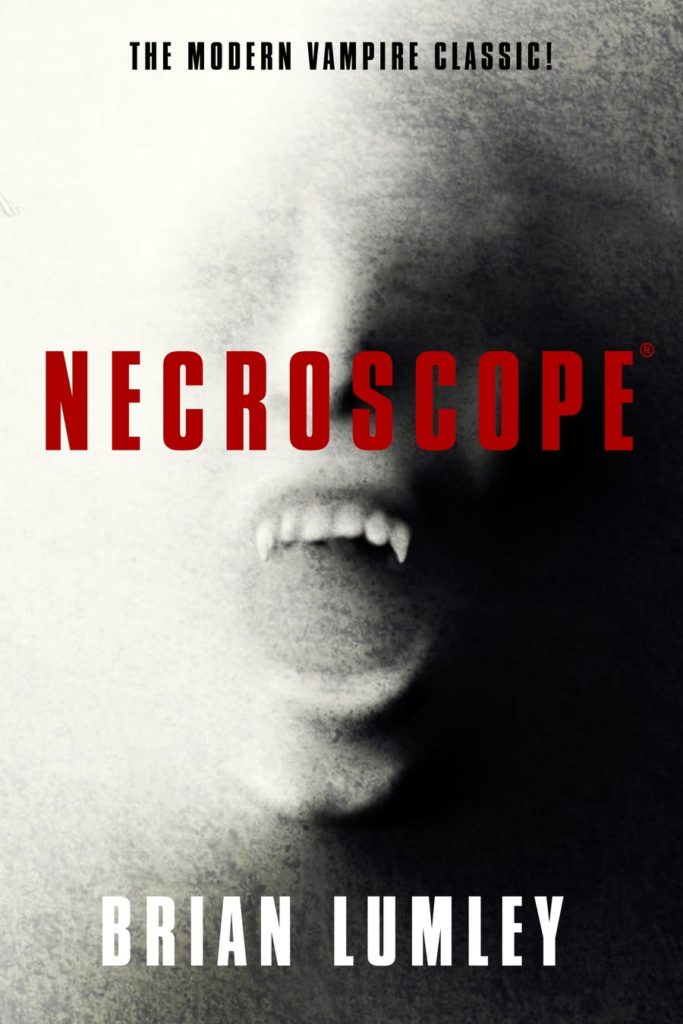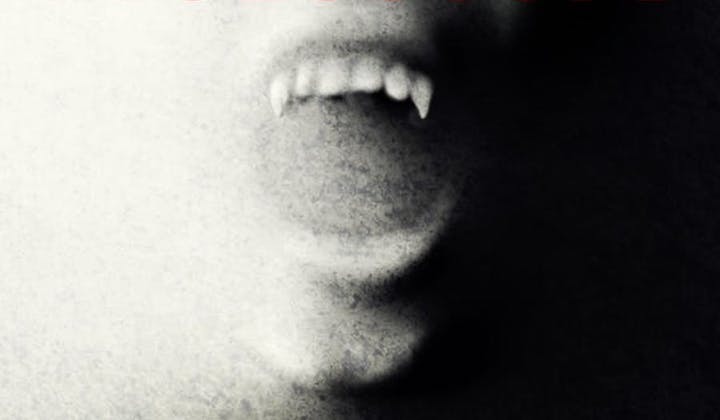In the year 1986, Brian Lumley mixed together vampire fiction, psionics, a very grounded sort of Cold War spy fiction, and his own gothic horror background, and came up with something bizarre and profound: Necroscope, a massive novel about a man who speaks to the dead and runs afoul of both the KGB and vampires, becoming the focal point in two intertwining secret wars. While all of that was enough to make the book supremely influential (neither the supernatural espionage genre as we know it nor several modern portrayals of vampires would exist without Lumley’s work), Necroscope remains a classic for a decidedly different reason. While Lumley’s world is just as dark and nasty as most horror, especially in the late 1980s and early 1990s, its emphasis on consent and healthy boundaries in its plot about psychics, vampires, and psychic vampires sets it apart. It’s this emphasis on consent and boundaries, and the contrast between consensual and nonconsensual power, that makes Necroscope a classic of the genre, and gives it staying power even thirty-six years after its initial publication.
But first, the basics. Necroscope tells of a struggle between two major forces. In one corner, Harry Keogh, a successful writer who is what he calls a “necroscope,” basically a switchboard operator for the deceased. This makes him fast friends with a number of spirits who impart their wisdom, granting him everything from judo skills to higher-level intuitive mathematical abilities. In the other, Boris Dragosani, an ambitious “necromancer” who rips apart dead bodies to psychically tear the secrets from their heads, serving both the KGB’s psionic wing and Ferenczy, a manipulative and entombed wamphyri (vampire) with his own designs for Dragosani. The two are set on a collision course as the KGB and its psychics launch an attack on their British counterparts, dragging Harry and his rare talent into Dragosani’s cross-hairs. But as the two gather their powers for their eventual clash, forces beyond their control move into position, all with plans of their own involving the two psychics on a much larger stage.

Let’s begin with Harry Keogh. Harry’s talent is an ability to talk to the dead, and to allow the dead to talk to each other. Think of him as something like a telephone switchboard operator whose only clients are ghosts. The dead are more than pleased to chat with Harry, because Harry is diplomatic with them. He simply talks with them, gets them to open up, and then learns whatever they’ve spent the countless years since their demise thinking about. Lumley presents Harry as a relatively amiable person, kind in most cases, and so concerned with others that he can’t even commit to his girlfriend, a woman he’s loved since childhood. Similarly, Sir Keenan, the head of the British “ESPionage” unit who recruits Harry to his cause, does so by trying his best to put Harry at ease and make friends with him. Harry’s life is the picture of a supportive, thriving environment where people respect each other’s boundaries in spite of their powers. In fact, it’s only when he betrays that consent and tries to avenge his mother’s murder against her express wishes that she snaps and starts foretelling deaths, including his own.
On the other side of the coin, however, is Boris Dragosani. Dragosani is introduced going into a psychic trance while nude and eviscerating a corpse to dig out secrets from its entrails and brain. His life is defined by a lack of consent. His victims, when they talk to Harry, specifically describe Dragosani’s power as a nonconsensual atrocity, a great violation of their form that makes even the people on Dragosani’s side turn against him after death. He’s repulsed by pretty much all human contact, thanks to past sexual trauma. And his mentor, Ferenczy, is a manipulative undead sadist who eventually reveals that his ultimate motive was to turn Dragosani into a vampire so he could use him as a sex slave and food source, something driven home when Ferenczy repeatedly possesses him and tries to claim Dragosani gave him control of his own free will. Even Dragosani’s job is defined by a lack of consent and boundaries, with the KGB psionic research facility portrayed as little more than a utilitarian prison. When Dragosani finally betrays his fellow psychics, he resorts to the same threats and sadism he’s been taught his entire life, ordering deaths and auguring everyone he can get his taloned hands on in an effort to cling to what little power is slipping out of his grasp. It makes him more of a tragic figure, falling to the same cycle of abuse he’s been a victim of for most of his life until the point it all comes crashing down.
It also keeps the book from sliding completely into cynicism. More than once, Harry is given a pep talk by the dead before a conflict, for one. For another, outside of the vampires and serial killer, most of the villains are at worst kind of a dark shade of gray. That idea of diplomacy, kindness, consent, and support as heroic values, as well as the hero’s power over death, give the book a much less cynical feel despite the Cold War setting and gruesome Gothic horror scenes. That a book that ends with most of its major characters dead (not that it stops them from participating in the plot) still ends on a resoundingly upbeat note is just a testament to Necroscope‘s strengths. That it’s unambiguously a horror novel, but manages to rise above that cynicism and use its story to discuss healthy relationships only makes it more of an achievement, more worthy of its place in the horror canon.
This focus on consent recontextualizes many of the nastier, more “transgressive” elements of ’80s horror. Necroscope, when it decides to cut loose, indulges in just as much body horror, violence, and vileness as its peers of the era (thanks to Brian Lumley, I will never be able to get the phrase “like sitting on a fountain of acid” out of my head), but Lumley uses these elements differently. He makes the horrifying moments and plot developments part of the overall conversation, rather than just another shocking element meant to cause maximum discomfort to the reader. The book also raises important questions around its psychic mechanisms that too rarely get raised in genre fiction, namely the idea that digging into someone’s thoughts or using your mind to spy on someone without their permission can be as grave a violation of consent and boundaries as any physical violation. That isn’t to say it completely excuses the more objectionable elements of the story (of the three women in the cast, one of them is brutalized, one is dead before the story starts, and the third technically dies in childbirth, and the idea that Dragosani’s neuroses are a product of a traumatic environment is a little tone-deaf), but the context and the overall theme of Necroscope does a lot to examine and address these themes in more detail, especially for a decade that saw the start of the splatterpunk boom and more “hardcore” and “transgressive” themes in horror arise.
It’s that willingness to make its tropes and more unsavory elements part of the conversation that gives Necroscope its staying power, even thirty years later. It’s definitely a product of its time, with all the body horror and ultraviolence you might expect from an ’80s horror book. Don’t get it twisted. But its ability to actually interrogate the idea of consent and making that idea a central topic in discussions of vampires and psychic powers puts it ahead of most of its peers, and despite occasional problematic content, have much more longevity than other works might have. With Necroscope, Brian Lumley created a gothic epic for modern times, one that still deserves reading.
Just enter freely, and of your own will.




One thought on “Tales from the Backlist: Necroscope’s Focus on Consent Recontextualizes 80s Horror”